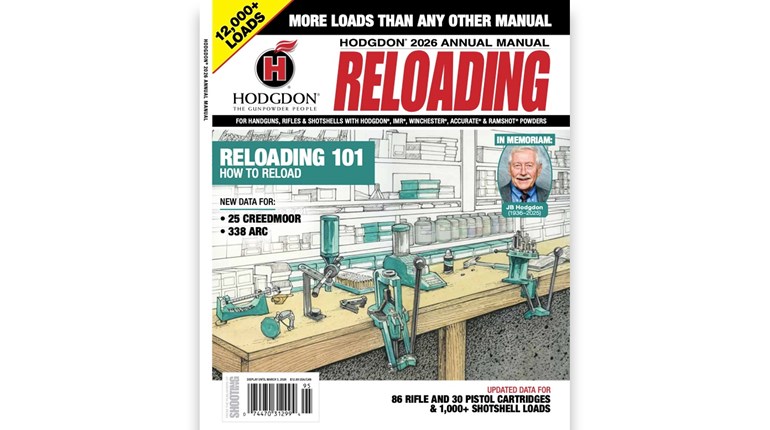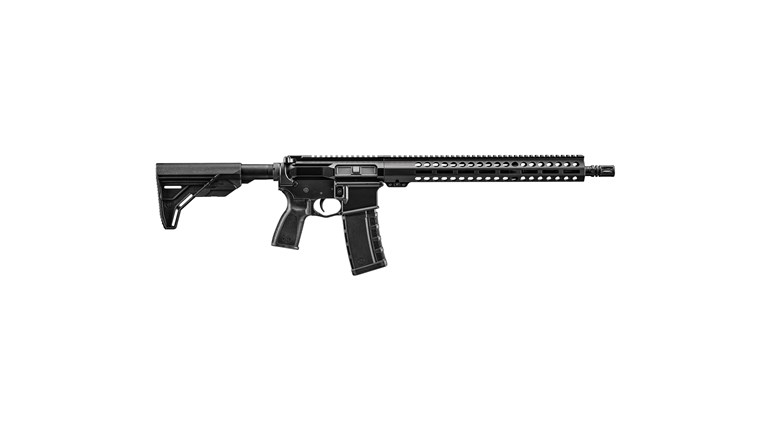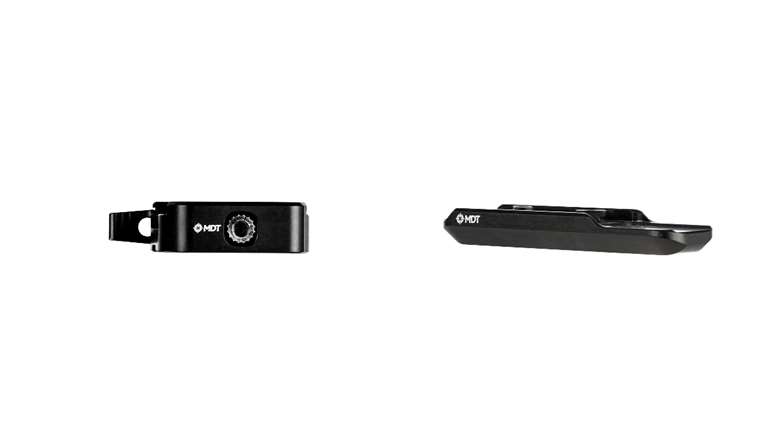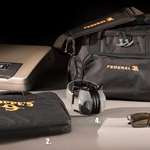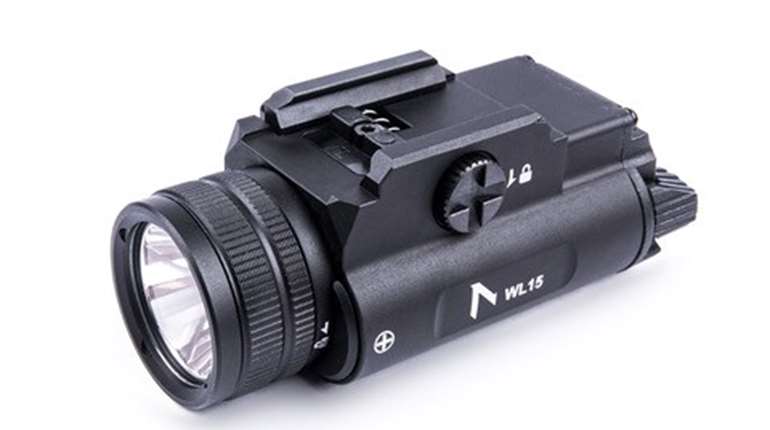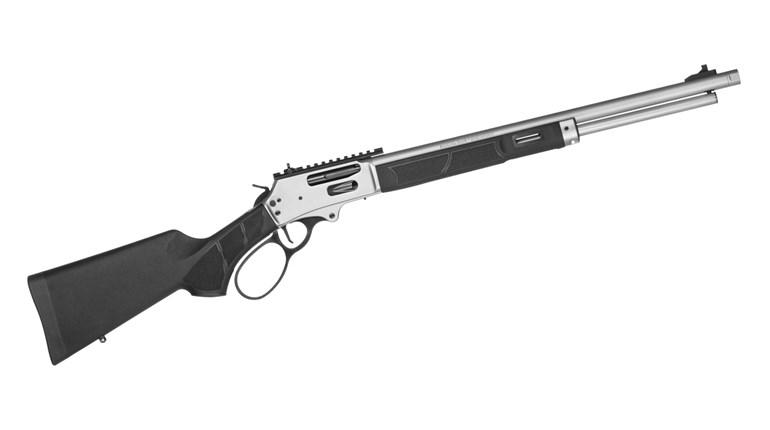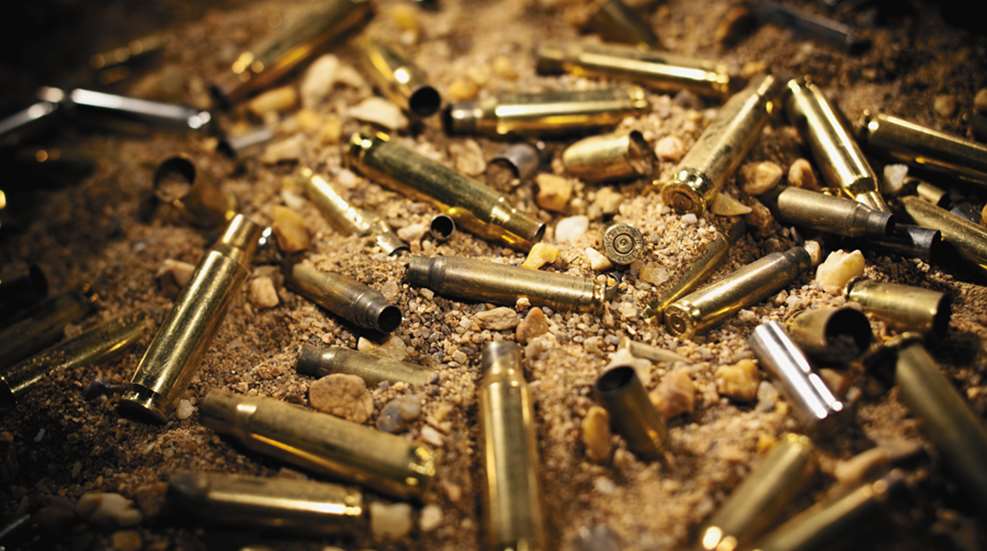
And if the rest of the competitors want to litter the range with their discarded cases, I see it as my civic duty to clean up the mess.
I recycle .223 Rem. brass through my Dillon Super 1050 progressive loader to use for practice and shooting more matches. So you might say I am a "green" shooter. But, I soon learned that with range brass, you never know what you are going to get. You can't just dump it in the case feeder on your loader and go. You must process it first.
Step 1: Clean It
Range brass is full of dirt, dust, sand and debris that can be damaging to loading dies, as well as causing other problems. I shake the brass in a container with a perforated bottom. I use a five-gallon bucket with holes drilled in the bottom and a cover for the top. By shaking it in small lots, I can shake out much of the dirt and sand.
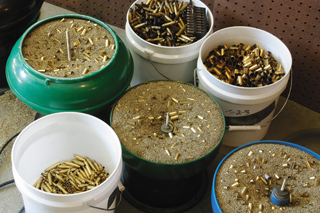
Then I wash the brass. I use an RCBS tumbler and fill it with water and a little detergent, or I use the company's liquid case cleaner. This washes out most of the rest of the dirt and flushes out the stuff inside the cases. Afterward, I rinse several times with fresh water.
Step 2: Sort
Most range brass is a mishmash of different cartridges, so the brass must be sorted. I use Shell Sorter pans for a rough sort. This will separate the pistol brass and isolate much of the rifle brass. But, the final sort is always by hand. I buy two-gallon paint buckets at Home Depot, label them for a specific cartridge and line up the brass for the hand sort.
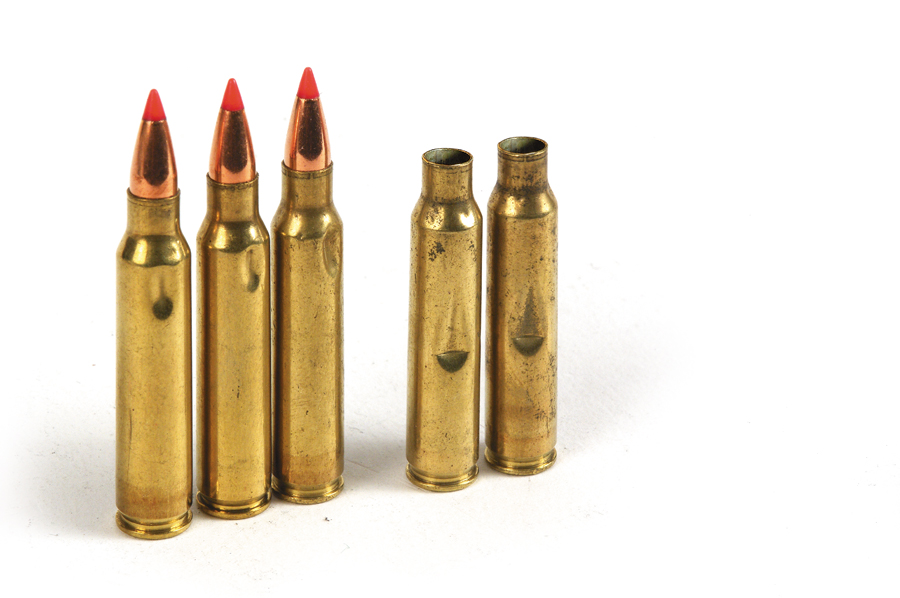
Hand sorting ensures you have the right brass in the right bucket. It also lets you eliminate any steel or aluminum cases, as they are not reloadable. I also toss any that are severely damaged. Small dents or bent necks are fine, but any major crushing or any dent with a crease is tossed. After sorting, I let the cases dry for about a week, mixing and shaking every day or two to get the water out.
Step 3: Clean It Again
I put the brass in a vibrating case cleaner with ground corncob, sometimes with some added polishing agent and let it run until the cases are nice and shiny.
Step 4: Size and Deprime
Most progressive presses have a size-and-deprime station as the first stage. If your brass is of a known quality you can usually go right to loading, but range brass does not have a known history. You may have commercial cases or military cases. They may be once-fired or reloaded several times. So, you must go through a preparation process before you put them in your loader.
The next step after cleaning and sorting is to lubricate the cases. I use a spray lubricant. The best approach is to stand them up in a block and spray in 50-case lots.
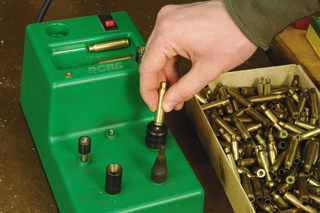
Then, run every case through a full-length resizing die with a deprimer. The reason for resizing is to fix all bent or damaged necks and to repair damage to the case body. Some dents in the body will remain, but the outside dimensions are fine and the loaded ammo will function. Small dents will iron out when firing.
Step 5: Trim and Debur
The reason the necks must be repaired is so you can trim the case to length. Cases that are too long can cause all kinds of problems. The best tool I have found for high-volume trimming is Dillon's Rapid Trim 1200B Case Trimmer. I have this electric trimmer mounted in a dedicated single-stage press. You simply insert a case into the shell holder and raise the ram to trim it instantly. The process is so fast, it almost feels like cheating.
But, that feeling dissipates with the next step. You must chamfer/debur the inside and outside of the case mouth. I use an RCBS Trim Mate Case Prep Center for this chore.
Step 6: Remove the Primer Crimp
Any military 5.56 NATO case will have a crimp on the primer. Also, all Federal .223 Rem. cases—even the commercial hunting-style—will have a crimp. I suppose you can go through every single case and look at it, but I find that it is much faster to just ream the primer pocket on every case.
One reason I use the RCBS Trim Mate is for the primer crimp reamer you can add to one of the four stations. Of course, two of the others have an inside and an outside chamfering/deburring tool.
There are two ways to remove the primer crimp—swaging or reaming. In fact, the Dillon Super 1050 has a primer swaging station built in. Dillon also has a very good bench-mounted swaging tool, but swaging is dependent on the case being supported inside with a stem against the top of the case web so the swager can reform the primer pocket. The problem is, not all case webs are the same thickness.
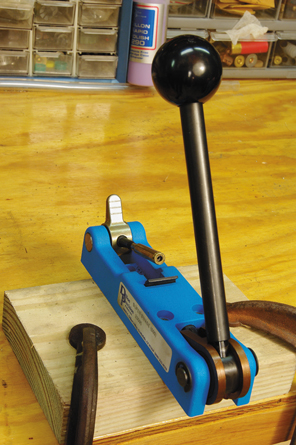
For the swager to work properly, you must sort the cases by brand and lot, and then readjust the swager for each new lot. If you have a big lot of the same cases, a swager is a very good way to go. With range brass, however, you will likely have a lot of different cases and it can take hours to sort and readjust the swager.
I like the RCBS TM Military Crimp Remover for a couple of reasons: This tapered reamer cuts away the primer crimp. The depth it cuts is adjustable and it indexes of the case head, so the cut is uniform on every case regardless of case-web thickness. It also leaves a bevel on the edge of the primer pocket. This bevel acts like a guide to feed the primers more easily into the pocket and makes progressive loading machines run much smoother. Most of the problems I have with loading .223 Rem. brass on any progressive loader are priming related. By putting a slight bevel on the leading edge of every primer pocket, I found many of my priming problems went away.
Step 7: Load the Brass
Your .223 Rem. brass is now prepped and ready to load on your progressive machine. It might be a good idea if you re-lubricate the cases before you run them into the sizing die.
You can sort all that brass by brand if you wish, but I find the process to be too much work. So to accommodate the difference in case capacity when using mixed brass, I use a moderate powder charge that is safe in any case. The velocity is a bit lower, but for practice it is not an issue. In fact, I use this load for much of my competitive shooting as well. In some ways it's better, with less wear and tear on steel targets and on my rifles. As for accuracy? My load, even in mixed range brass, is often the most accurate when testing new rifles.
After loading, every cartridge is checked with a Dillon Case Gage to ensure it has proper dimensions and will chamber reliably.
Editor's Note: Some ranges collect and sell brass to help fund it's operation, so it's important to always ask permission to police up discarded brass!












